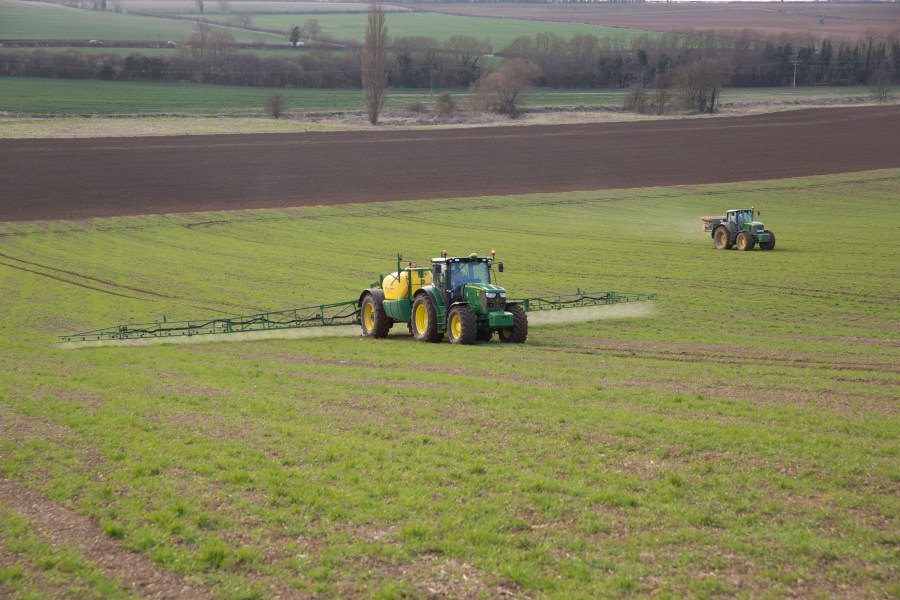With mounting resistance to single-site SDHI, azole and strobilurin chemistries making the effective control of wheat and barley diseases increasingly difficult to achieve, a multi-site fungicide must be included in crop protection programmes, according to Adama. Charlotte Cunningham reports.
As well as ensuring crops are protected, the latest advice from Adama will also help to prolong the effective lifetime of at-risk single-site products, according to the firm.
The result is a plea from the firm, urging growers and agronomists to increase the diversity of their spring spray programmes by including folpet as an alternative mode of action.
“In recent years, the efficacy of some of the principal wheat and barley ‘single-site’ fungicides have been eroded by mounting disease resistance,” explains David Roberts, technical specialist for Adama. “Meanwhile, other active ingredients have been lost to continuing regulatory restrictions.
“Growers must therefore think carefully about how they structure their spring fungicide programmes, not only to provide effective control of diseases such as septoria in wheat and rhynchosporium and ramularia in barley, but also to safeguard the long-term efficacy of single-site fungicides by slowing the rate of further sensitivity shifts.”
Diminishing efficacy
Whilst the azole group of fungicides remains relatively stable against rhynchosporium and net blotch, their efficacy against ramularia has diminished in recent years, with field resistance to prothioconazole first reported in Germany in 2016 and in the UK in 2017, he adds. “A similar pattern appears when assessing the performance of SDHIs – as a group they remain largely stable against rhynchosporium, but there are warning signs that they are less effective against diseases such as net blotch, with reduced sensitivity to SDHIs first recorded in the UK in 2013 and reduced field performance seen since 2016.
“Mutations in ramularia populations have also been detected across Northern Europe, with significant field performance issues – even when used in mixture with prothioconazole – confirmed in the UK in 2017.”
Despite evidence to suggest the efficacy of strobilurins against rhynchosporium is beginning to erode, the field performance of this group of fungicides remains good in programmes, adds David.
“Against net blotch however, the F129L mutation which was first detected in 2004 confers partial resistance to strobilurins with variable field control seen in the UK for many years. Against ramularia the situation is more serious, with monitoring showing that almost 100% of UK populations are affected by the G143A mutation, effectively rendering strobilurins ineffectual.
“In contrast, folpet remains unaffected by these resistance issues and continues to provide good levels of protection thanks to its ability to affect multiple sites within a pathogen.
“The recommended course of action is therefore to keep ahead of diseases by implementing an integrated disease management strategy. This means selecting disease resistant varieties, instigating cultural and rotational changes to prevent the spread of disease, using disease forecasting technologies to understand when crops are at risk, and using a diversity of fungicide modes of action, including a multi-site, to provide robust protection.”
Increase potential
David therefore endorses the use of folpet in the tank mix at T0 to protect against septoria in wheat and again at T1 (or at the later T1.5 and T2 timings should the need arise) when it will aid green leaf retention and increase the potential for improved yields.
“At T0 folpet will also protect azole partners against further erosion of efficacy and can counteract the effects of selection pressure thereby making subsequent disease infections more sensitive to epoxiconazole. Folpet also offers the additional advantage of not interfering with the curative kickback activity of azoles – an important factor where active rust is present as it is important to maximise the speed of activity and the curative effect of the azole in order to combat infections effectively.”
Folpet also provides good protection against yellow rust and can be used as a standalone active or as a mix partner for straight SDHI fungicides to provide a full ‘belt and braces’ approach to wheat protection. In barley, Folpet is flexible enough to be used at T0, T1 and T2 to provide protectant control of rhynchosporium and to provide additional activity against ramularia, he adds.
“In order to maximise the yield potential of barley, spring spray programmes should be designed to maximise the crop’s green area index by reducing the effect of disease on tiller numbers early in the season and to keep the entire plant as green as possible for as long as possible.
“A well-timed T1 spray (typically GS 30-32 in winter barley or GS 25-30 in spring barley) will protect the crop at tillering and should be followed by a subsequent treatment at T2 (typically GS 39-49) to provide continued protection.”
Long-term viability
According to David the message is clear – growers must use a multi-site fungicide to safeguard the long-term viability and sustainability of the remaining single-site modes of action. “Folpet is recognised by FRAG (Fungicides Resistance Action Group) as a valuable tool for managing resistance thanks to its ability to provide added levels and spectrum of disease control which can protect and prolong the lifespan of medium to high resistance risk fungicides like SDHIs. It is therefore the ideal tank mix partner in wheat and barley protection programmes.”




